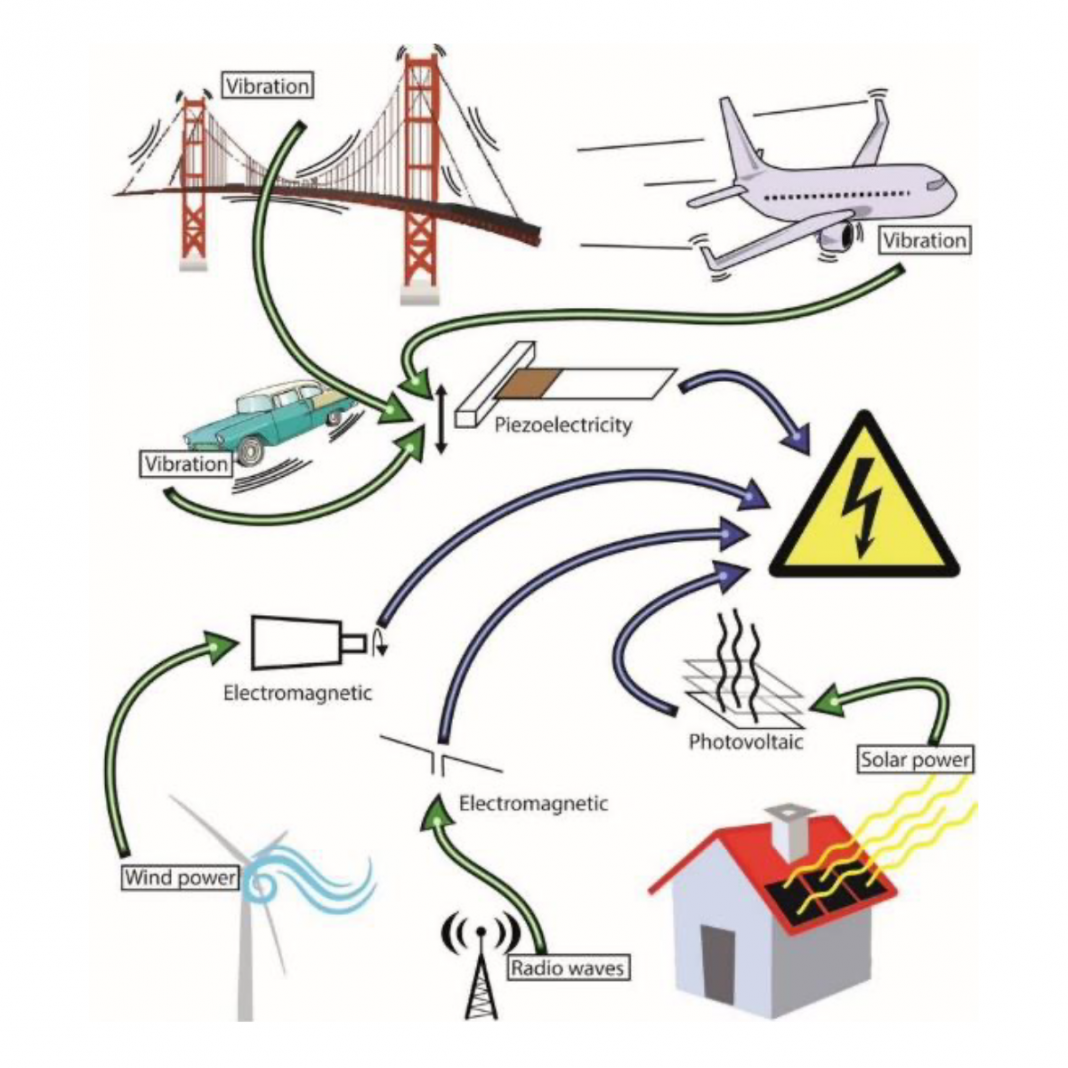The Internet of Things (IoT) and services, wireless sensor networks (WSNs), trillions of sensors, Industry 4.0, and digitalisation – all these are hungry for data, and their common challenge is energy
Can you imagine how many batteries need to be manufactured and replaced and how many kilometres of power cables are required to deploy the enormous number of sensor systems needed and wanted today?
Creating energy-autonomous smart systems—compact, self-contained, and powered by lifelong energy sources— facilitates easier installation and maintenance. These systems can thrive in challenging environments, remote locations, and scenarios requiring large quantities. From a broader perspective – economic, social and political – energy, as water, is becoming a universal currency, making renewable energy even more important.
Harnessing from the ambient environment, which otherwise is lost, transforms it into energy, powering devices to last an unlimited lifetime, restricted only by its components’ lifetime. It’s proven to work in bicycle dynamos, solar panels, and wind turbines. Energy harvesting label is, in general, ascribed to powering small and miniaturised devices with low-power consumption, like sensors and wearable electronics. Energy harvesting serves as a solution to and a key enabling technology to the battery puzzle for IoT and WSN (Fig 1).
We learn from nature and our own body how energy is converted. Enzymatic reactions – biofuel cells, bacterial cells’ potential, heartbeat, all contribute to our understanding. We then seek to transfer it to physics to harvest energy from an environment where abundant energy exists due to temperature gradients, vibrations/ movement, light, and electromagnetic field.
The transformation of these energy forms into electricity can be done in many ways, with their advantages and disadvantages. Considerations include size (e.g. performance decreases with downscaling), required power levels and duration. For mechanical vibrations, piezoelectric material is mainly used to convert generated strain into electricity. Still, reliability challenges need to be solved. For electromagnetic transduction at a macroscopic scale conversion is highly effective in comparison to piezoelectric methods.
Challenges and constant technology progress
The harvested energy is not always directly usable by electronic devices, so it must first be converted. Also, it is not always possible for sensors to be active. Thus, it must be stored in a supercapacitor or rechargeable battery when the sensor is inactive. All these operations are controlled by the power management electronics (Fig 2).
A functional harvester is a complex system whose design is a challenge requiring simultaneous tackling of all components to make them as low power consumption as possible and, at the same time, increase their efficiency even if incompatible boundaries and their matching contradict some of these. This demands interdisciplinary scientific and technological research and innovation from material science, modelling of components and their behaviour, up to processing and instrumentation development for effective translation into validated systems. (1)
Harvester’s challenges extend to network systems due to their time- varying and uncertain availability. Designing network protocols, communication, dynamic resources, and task allocation become challenging. Luckily, this energy is continuously refilled, allowing for new protocols to predict the arrival of future energy.
Another IoT/WSN requirement becoming actual and acute is data security due to its application in commerce, industry, government, and military. But this needs energy, a tough constraint when only relying on energy harvesting as the power source.
Zero-energy sensor
The fast technological progress in decreasing the power consumption of sensors and electronics, plus the considerable increase in computation capacity accelerate the growth of zero-energy IoT sensors based on energy harvesting. Allowing the sensors and systems to be energy-autonomous means their installation will be easier and last much longer with less environmental impact.
Another advantage is that the zero-energy system can be smaller and lighter as demonstrated in the case of a car’s smart tyre. This self-powered system is part of the EU project ‘Energy ECS’.
It is already mandatory to have a tyre pressure monitoring system (TPMS) in new cars in the U.S. (2007) and in the EU (2022). However, TPMS requires continuous power that currently is only from batteries. Therefore, we are developing a movement/strain energy harvester to power up and run the Nokian Tyres sensor to monitor car tyre condition for improved safety and autonomous driving-related needs. Continuous data is needed to ensure safety, especially in the case of autonomous driving.
This work, test & trial in the tyre, is in parallel progress with developing a new simulation procedure for harvester prototypes. The simulation model simultaneously and dynamically combines the tyre deformation and its influence on the harvester’s energy output (piezoelectric, triboelectric). This gives more realistic information in a much shorter time, allowing for easier investigation of systems parameters influencing the output power and, simultaneously, easier correlation with and improvement from experimental results. (2)
Today, transport infrastructures and industrial applications are already utilising many wireless sensor networks, which will hugely increase. A smart tyre with zero-energy sensing is one of the many examples showing that the industry is becoming more interested in this quite new technology. This allows for a faster transition from lab research towards in-field applications.
Significant variation in experience from practical energy harvesting applications leads to difficulties for some industries to define and formulate a clear market. This difficulty persists as long as the technology is not mature enough for clear ROI calculations (business development on estimations is risky, especially when vast investments need to be made).
However, I perceive a glimmer of hope on the horizon. The combination of zero-energy systems with progress in other fields (e.g. artificial intelligence computation) and the vast pool of excellent scientists will help to develop better and more eco-friendly material, sustainable manufacturing possibilities, lower costs giving the bigger business and economic opportunities.
Learn about RISE Research Institutes of Sweden, a top research and innovation partner supporting Sweden’s business community’s international competitiveness and contributing to a sustainable society.
References
- https://energyecs.eu/wp-content/uploads/2023/11/RISE_Presentation-of-SensorConverge_2023-June.pdf
- H. Staaf et al., Simulated and Measured Piezoelectric Energy Harvesting of Dynamic Load in Tires, http://dx.doi.org/10.2139/ssrn.4471638

This work is licensed under Creative Commons Attribution-NonCommercial-NoDerivatives 4.0 International.


